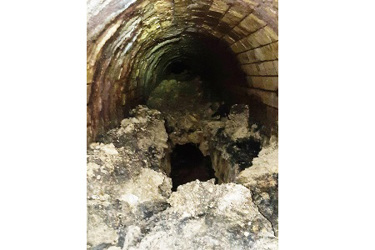Fatbergs Weighing More Than Three Blue Whales Cleared In Record London Sewer Clean-Up

Giant masses of fat, wet wipes and even solid concrete weighing more than three blue whales have been cleared from London’s sewers in the last year.
Just short of 700 tonnes of debris was removed by Thames Water engineers working underground in 12 major sewers across the capital as part of the record cleaning programme.
In total, Thames Water engineers cleaned more than 900km of sewers across London and the Thames Valley in the last year, a 50% increase on the previous year’s total and three times higher than in 2017/18.
It means wastewater can continue to safely flow from the homes and businesses of millions of Londoners through the company’s Victorian-era network without being blocked by obstacles like fatbergs, which can cause flooding to properties and the environment.
Engineers spent a combined 11,000 hours carrying out the work, which included using high powered water jets to blast away blockages and powerful vacuums to suck them out.
They also had to use hand tools to break down some of the more stubborn blockages, including “concretebergs”, which occur when concrete is incorrectly poured down the drain and solidifies.
Matt Rimmer, Thames Water’s head of waste networks, said: “While it isn’t the most pleasant of jobs, battling fatbergs and other blockages in our sewers is crucial in ensuring we’re able to safely take away the waste of millions of customers.
“Our engineers carried out a record amount of cleaning this year but we have plans to go even further next year to keep our sewers flowing.
“Some of the things we encounter underground highlight just how important it is to ensure nothing gets into the sewer that shouldn’t do. We urge all our customers to only flush the three Ps – pee, poo and toilet paper – as well as binning fats and oils rather than pouring them down the sink.”
One of the largest jobs was in Greenwich, where a staggering 183 tonnes of unwanted material was cleared from less than a kilometre of sewer, the same as a Boeing 747 passenger jet.
More than 100 tonnes was also removed from Leicester Square and Piccadilly Circus. The longest job was in Waterloo Road, where engineers spent a combined 2,747 hours, or 114 days, clearing almost 100 tonnes of debris from a kilometre stretch of sewer.
Thames Water’s “Bin it, don’t block it” campaign offers guidance to customers on ways to avoid causing sewer blockages and tips on safely disposing of fats and oils or toiletries. Find out more about our Bin it, don't block it campaign.
Source: Thames Water Utilities Limited
